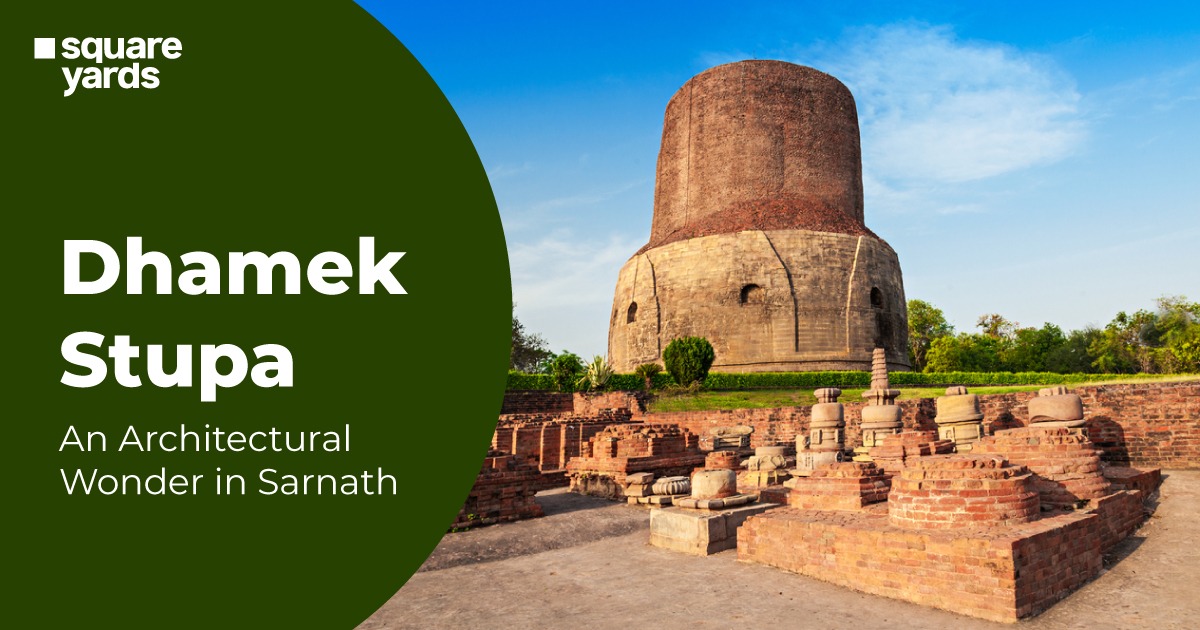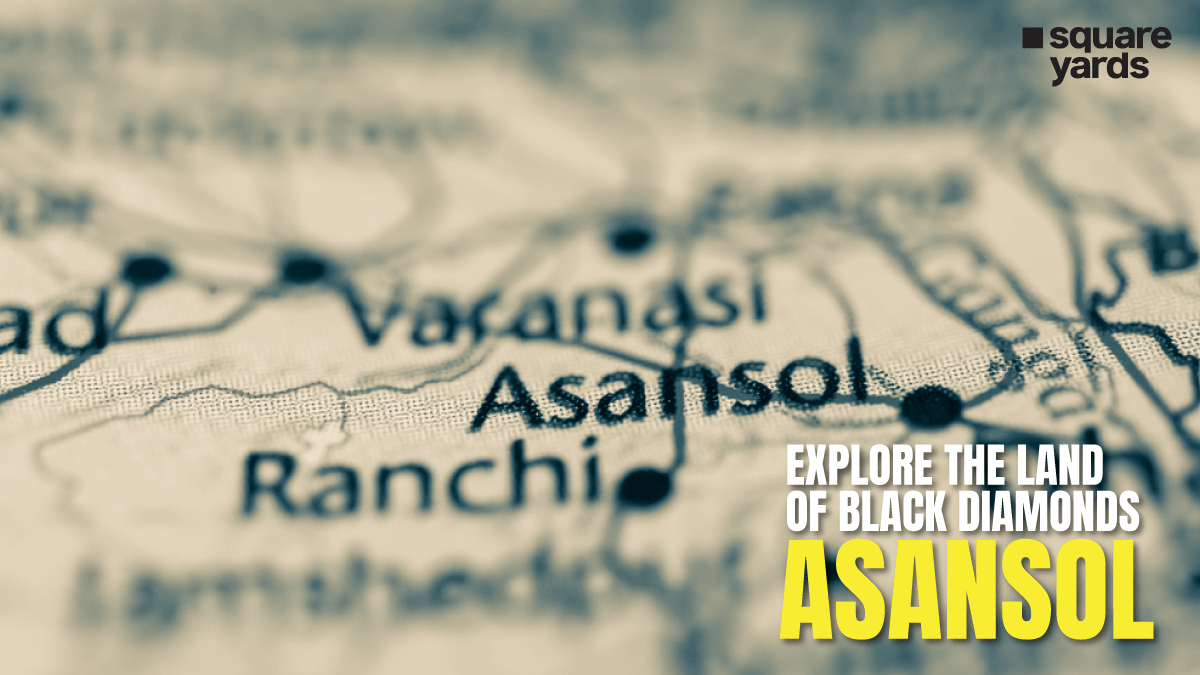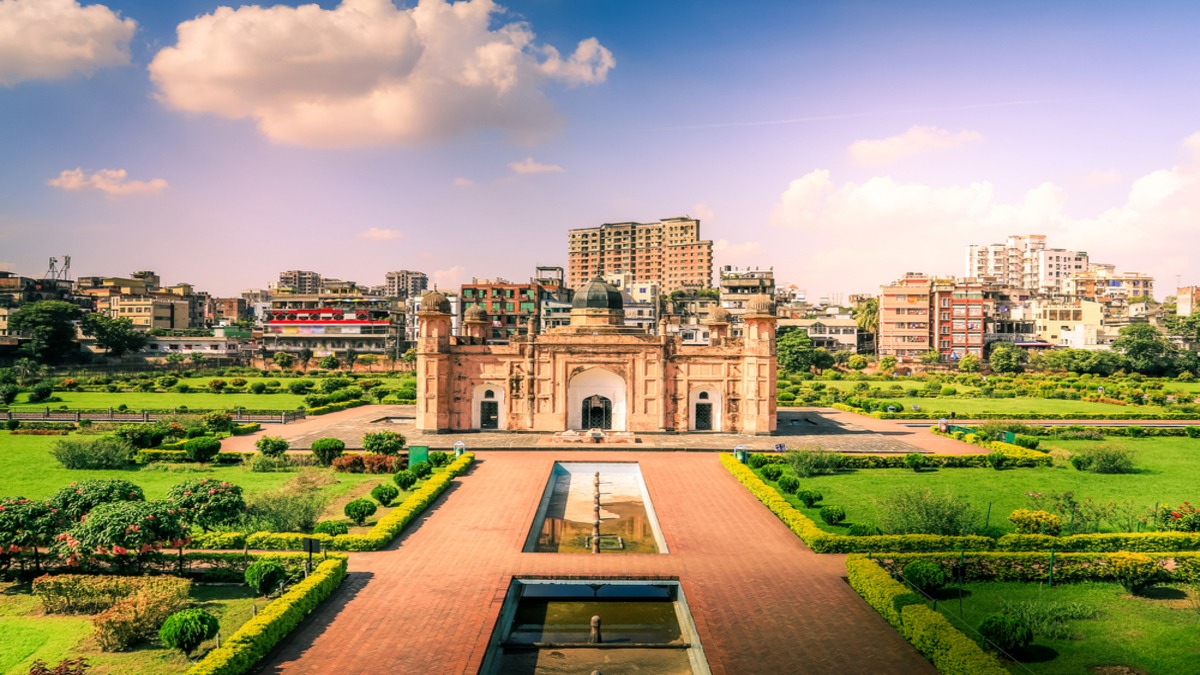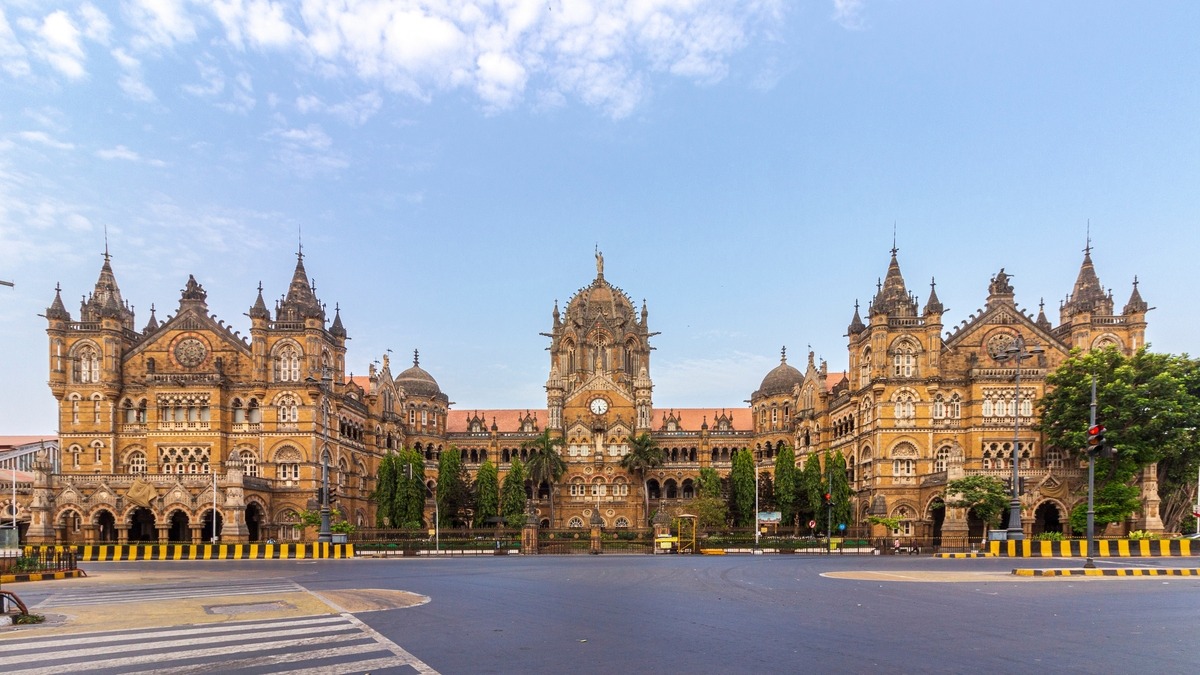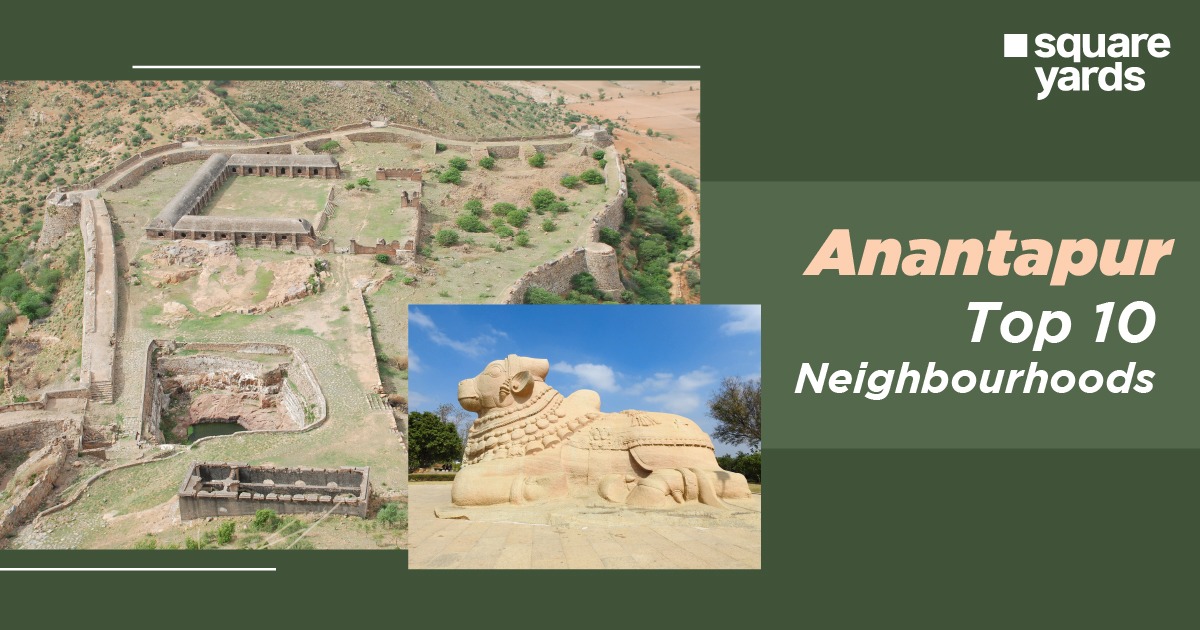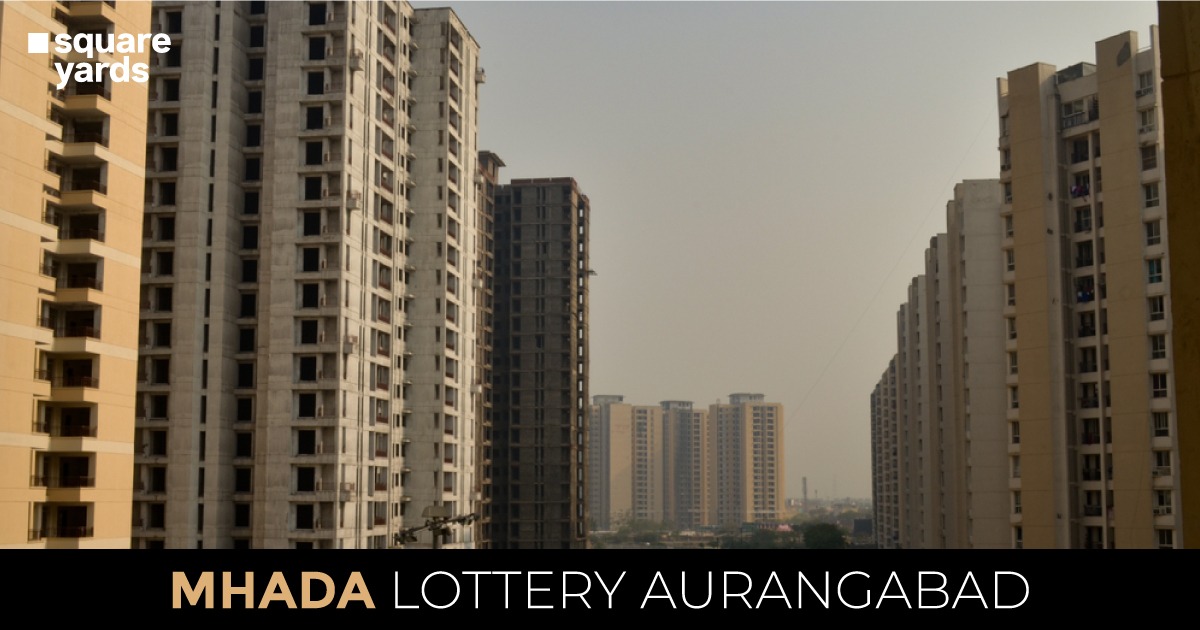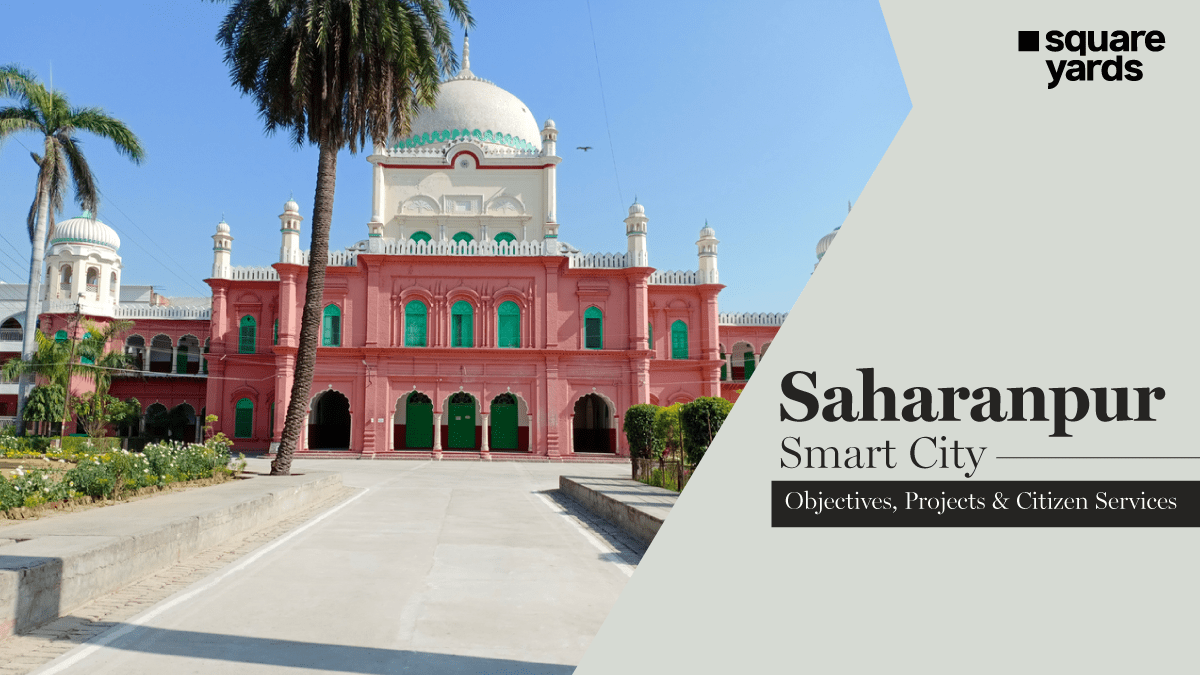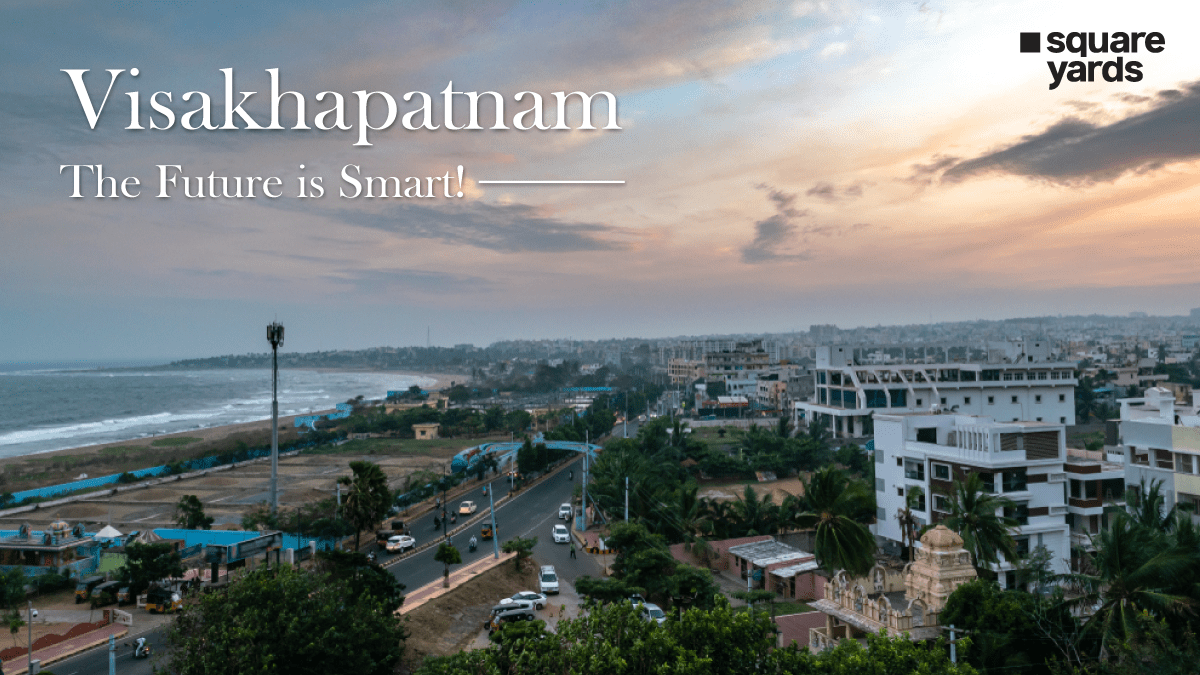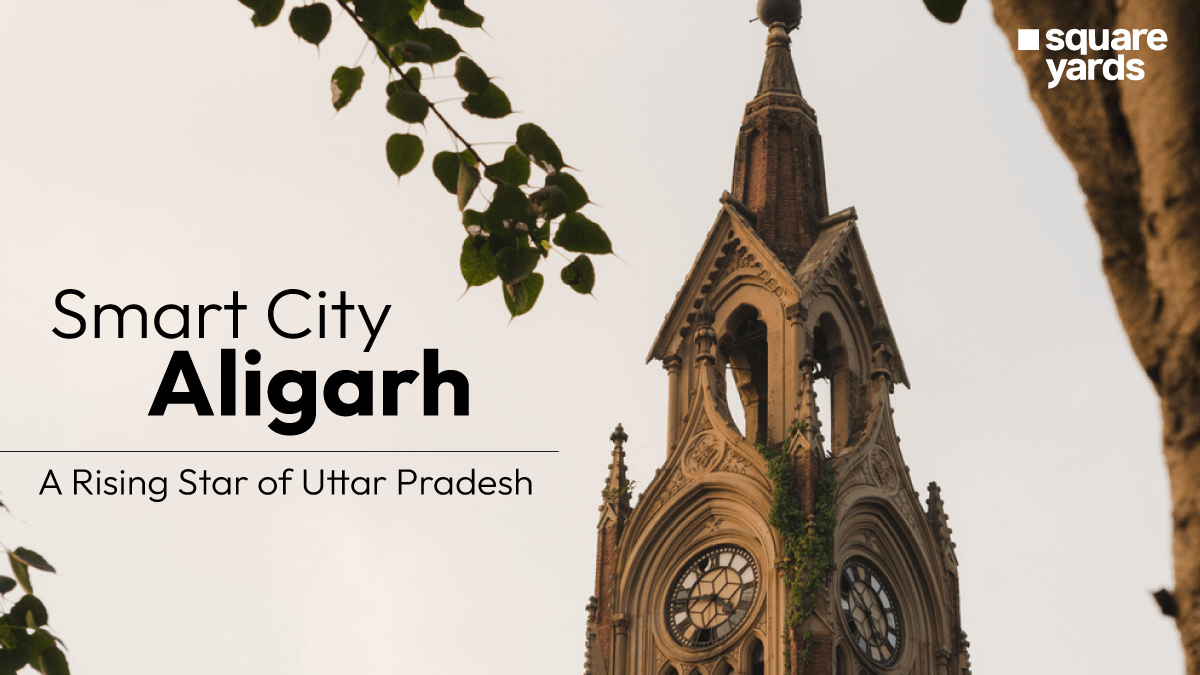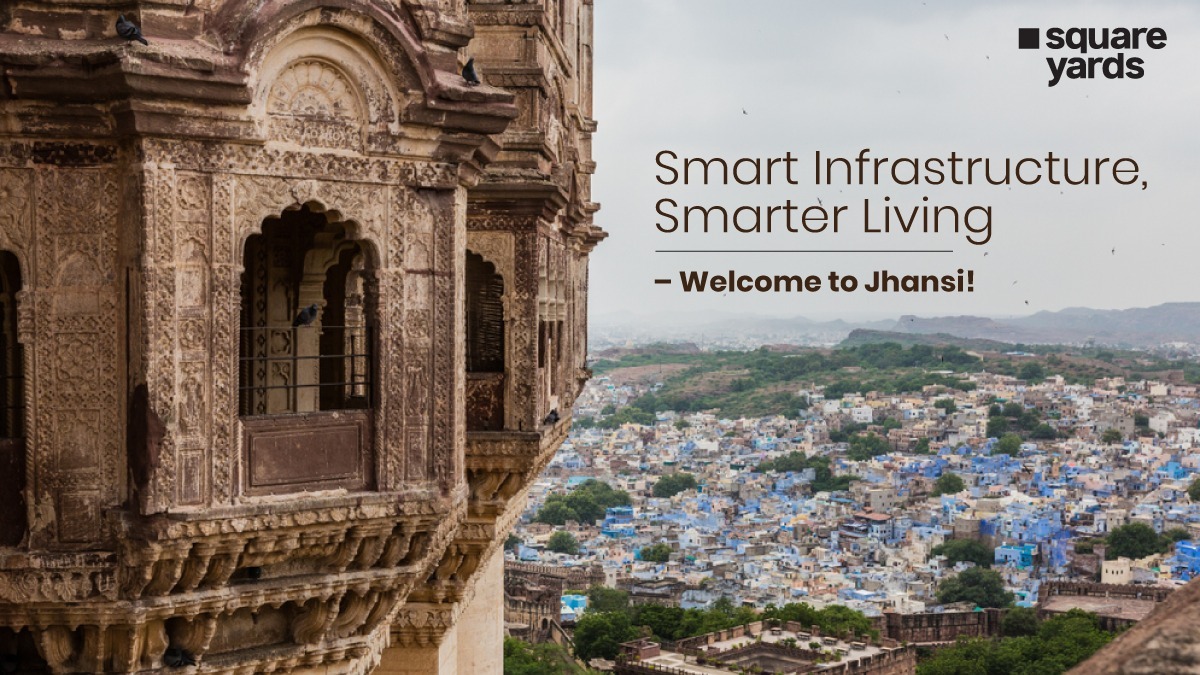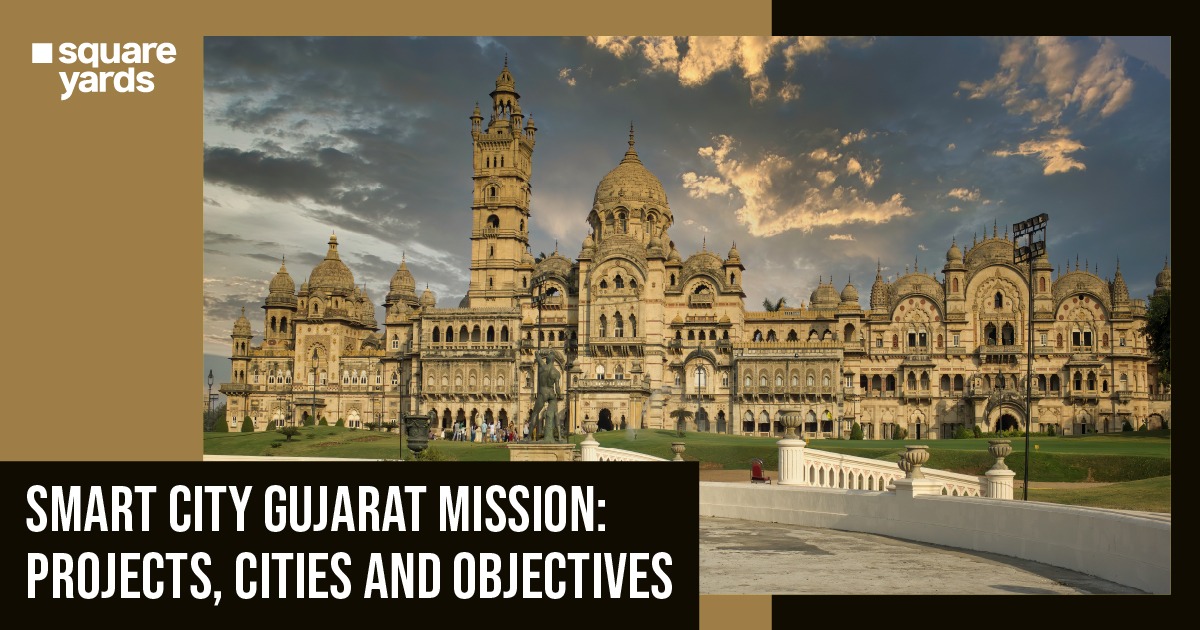Dhamek Stupa is among the most appreciated tourist attractions in Sarnath since it reflects historical and spiritual significance. The original building of this popular tourist destination in Sarnath, which is sometimes written Dhamekha or Dhamekh, was constructed in 249 BCE and was ordered by Ashoka, the illustrious Mauryan King. But the current one dates from 500 CE.
Dhamek Stupa, a structure of great religious significance, is said to symbolise the location where Lord Buddha gave his first sermon to his five disciples after achieving enlightenment in Bodh Gaya. The Ashoka Pillar, which commemorates Ashoka’s arrival in Sarnath, is one of the main draws of this well-known stupa in that city.
Table of contents
- History Of Dhamek Stupa
- Key Facts about Dhamek Stupa, Sarnath
- Architectural Design Of The Dhamek Stupa
- What’s inside Dhamek Stupa?
- Political Significance Of The Dhamek Stupa
- Timings And Entry Fees For Dhamek Stupa
- Ways To Reach Dhamek Stupa
- What Are The Best Times To Visit Dhamek Stupa?
- End Thoughts
- FREQUENTLY ASKED QUESTIONS(FAQ’S)
History Of Dhamek Stupa
After the death of Lord Buddha, his mortal remains were put to rest in ten locations, including eight mounds and two more mounds where the ashes and embers were interred. Monuments made of Buddha relics were erected at these ten locations. Although it has been challenging to locate all 10 of the original mounds due to a lack of adequate information.
Sarnath and Sanchi, however, appear to be extensions of the early mounds. The Mauryan King Ashoka ordered the construction of this stupa later in 249 BCE to house the calcined bones of Buddha and his disciples as well as other artefacts. Not only that, but he and his followers also disseminated Buddhism throughout India and the surrounding area.
Key Facts about Dhamek Stupa, Sarnath
The Dhamek Stupa is one of the major attractions for people who follow Buddhism. Some of the major facts about Dhamek Stupa are mentioned below:
- Dhamek Stupa is situated in the Sarnath region of Agra, Uttar Pradesh, India.
- The cylindrical Dhamekh Stupa is 28.3 metres in diameter and 34 metres in height.
- Delicate flower decorations of Gupta provenance are applied to the stone facing the bottom section.
- In Sarnath, the Dhamekh Stupa is significant because it represents the ‘seat of the holy Buddha.’
- Buddha delivered his first lecture to his followers after achieving enlightenment and unveiled his ‘Eightfold Path.’
- The great Mauryan Emperor constructed the Dhamek Stupa, which adorns Buddhism.
Architectural Design Of The Dhamek Stupa
One of Sarnath’s best-known historical landmarks is the Dhamek Stupa. The cylindrical Dhamek Stupa building is made of red bricks and stones. The entire lower portion is beautifully decorated with cut stones. This stupa’s whole structure stands proudly at a height of 43.6 m and a base circumference of 28 m.
In addition, there are a total of 8 nooks in the complex, each facing a different way. The inscriptions in the Brahmi Script are another noteworthy aspect of this ancient construction. At the Dhamek Stupa, there are also magnificently carved images of people and birds.
According to lore, the Dhamek Stupa was erected about the year 500 CE, but Emperor Ashoka had originally planned for it to be built in the third century BC. After the entry, there is a tiny museum with some fundamental information about the structure. The Archaeological Survey of India (ASI) is in charge of the monument, which is well-kept with tended gardens, seats, and trees that offer shade on hot afternoons.
The Dhamek Stupa, which is surrounded by several miniature stupas, was constructed by Emperor Ashoka as a sign of reverence for Lord Buddha. Additionally, there is a Buddhist monastery nearby that is currently in ruins. The Ashoka-built monastery served as a resting place for the visiting Buddhist monks.
What’s inside Dhamek Stupa?
Tourists are not allowed to go inside the Dhamek Stupa. The public cannot enter the inside of Dhamek Stupa. The stupa is thought to include a chamber for relics that formerly held a priceless Buddha artefact. Unfortunately, entry to this ancient chamber has been lost. Therefore, it’s unclear what exactly lies within.
Political Significance Of The Dhamek Stupa
Dhamek Stupa played a crucial role in the political history of ancient India. It was constructed by King Ashoka. He embraced Buddhism and promoted the religion. King Ashoka is still appreciated for his efforts to spread Buddhism. He constructed stupas and pillars across his empire, and Dhamek Stupa is one of them.
The construction of stupas like the Dhamek Stupa served both religious and political purposes. They marked territories and promoted Buddhism as the state religion. Today, these stupas are treated as valuable historical landmarks. They definitely connect us to the most influential period in India’s history.
Timings And Entry Fees For Dhamek Stupa
The Dhamek Stupa is open every day of the week. The location is open every day from six in the morning until six in the evening.
Entry Fees:
The entry fees are mentioned below:
Indian Citizens: INR 5
International Citizen: INR 100
For entering the stupa with video cameras, an additional fee of Rs 25 is required.
Ways To Reach Dhamek Stupa
Dhamek Stupa is conveniently situated in Sarnath, just 13 kilometres away from Varanasi. One can reach Dhamek Stupa through various modes of transport. The tourists can start by reaching the ‘city of lights’ Varanasi.
- One takes a flight to Varanasi and reaches Lal Bahadur Shastri Airport. From there, they can take a bus or cab to reach Dhamek Stupa.
- If you are travelling by train, reach either Varanasi railway station or Kashi railway station. From there, you can take cabs, buses, or auto rickshaws to reach the Dhamek stupa.
- All major cities are connected to Varanasi by road, and both public and private intercity buses are available for travel there.
What Are The Best Times To Visit Dhamek Stupa?
The deer park (Rishipattana) is represented by the Dhamek Stupa. According to legend, this park holds immense significance since it was where Buddha delivered his first lecture to his followers after achieving enlightenment and unveiled his ‘Eightfold Path.’
This architectural wonder stays open all year. But it would be really great if you visit it in the winters. September to January will be the ideal time of the year, when you can visit Dhamek Stupa.
End Thoughts
This masterpiece of ancient Indian architecture is located in Uttar Pradesh and was built as a Buddhist pilgrimage by King Ashoka during the Mauryan era in 249 BCE. Numerous devotees go from all over the world to visit this place. While most of the stupa’s past was lost to time, a British archaeologist, Mr. J. Duncan is said to have discovered a stone tablet inside the stupa in the 1790s. Its significance as a Buddhist pilgrimage site makes it a must-visit for anyone. Dhamek Stupa offers a glimpse into a fascinating chapter of India’s past. If you are a wanderer looking for a serene place for contemplation, this is the place for you!
FREQUENTLY ASKED QUESTIONS(FAQ’S)
Where is Dhamek Stupa located?
Dhamek Stupa is located in Sarnath, in the Indian state of Uttar Pradesh.
How to visit Dhamek Stupa palace?
If you wish to visit Dhamek Stupa, start your journey by reaching Agra. From there take a cab to Sarnath and rent an auto rickshaw to reach Dhamek Stupa.
Why is Dhamek Stupa Palace famous?
Dhamek Stupa is where Buddha delivered his first lecture to his followers after achieving enlightenment and unveiled his ‘Eightfold Path. That is why this place is believed to be famous and incredibly holy.
Is Dhamek Stupa a UNESCO World Heritage site?
Yes, Dhamek Stupa is a UNESCO world heritage site.
How much time does it take to visit Dhamek Stupa?
From reaching Sarnath to Agra and finally reaching Dhamek Stupa, it can take almost a day.
Is Dhamek Stupa safe?
Yes, Dhamek Stupa is considerably safe. Though tourists are not allowed to go inside the construction.
Who built the Dhamek Stupa?
Mauryan Emperor Ashoka built the Dhamek Stupa.


